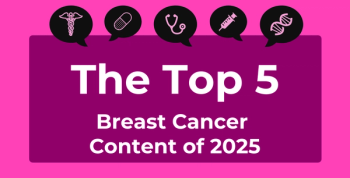
Evaluating Effectiveness of A Patient's Current HIV Treatment Regimen
Assessing the quality of an HIV treatment plan is crucial to patient prognosis.
Episodes in this series

Adam C. Welch, PharmD: When we talk about poor tolerability in patient treatment options and needing to switch to different agents, it sounds as if this happens more often than not. How do you encourage a patient to be on board with switching their routine and their lifestyle based on a new treatment regimen?
Christian B. Ramers, MD, MPH, FIDSA, AAHIVS: This is the bread-an-butter work of an HIV specialist. I have 400 patients who I see personally who are all on therapy and all stable and doing well. It’s much more rare that new patients come in, although they still do. This is what we do at every visit: we assess their general health, ask how they’re doing with the regimen, and review the labs, which can tell us if toxicity is starting to happen. Let’s say their creatinine starts rising a little. Let’s say their bone-mineral density is not what it should be. Or it indicates osteoporosis or osteopenia. If you ask it very skillfully and in a very open way, you can get patients to admit to you that they don’t like it.
An example is Atripla [efavirenz, emtricitabine, tenofovir disoproxil fumarate], which was a great innovation in 2006 when it came out. Everybody jumped on board for this single-tablet regimen because they wanted it, but it causes what we would call brain fog. You have to take it at night. Patients would have some vivid dreams, and they described a cognitive cloud that they may not be acutely aware of until they come off it. I had many patients [like this]. There was a meta-analysis study published showing patients on Atripla had a 2-fold increased risk of depression and suicide partially related to this brain fog. Patients may not have been aware of it. Then you switch them to an integrase regimen, and they say, “Oh my gosh, it’s like I’m awake again.”
Some things are evident in the lab, and some things are evident in the virological suppression that gets a little worse. Some things are evidenced in their body composition. Let’s say they’re developing different fat-distribution patterns or gaining a whole lot of weight. With some things, the patient and the provider need to have that relationship, so they feel open enough to talk about it.
Then it’s our job to lay out the options, taking into account their resistance patterns, history of infection, comorbidities, and medication list, and saying, “These are the 2 or 3 other things that might work for you.” Maybe offer the injectable if that would work for them, offer a couple of pill options, and allow the patient to choose. That’s a key part of the engagement. If I come down and say, “Your insurance covers only this,” then it’s destined for failure because the patient has no ownership, no skin in the game. But [it will be different] if I explain the best options, saying I’ve just been to a conference where we learned about this and I know the evidence well. [Then I say] “What do you think would work for you?” That’s the key to success and long-term outcomes for HIV.
Adam C. Welch, PharmD: It sounds as if practitioners need time to have these discussions with patients. A typical office visit may take longer than it does for patients with other chronic diseases.
Shauna Applin, ARNP, CNM, AAHIVS: It may take longer. You don’t always have the time. But they notice the personal attention, so maximize the amount of time you get to have with them, with a thorough set of questions that we go through reviewing labs. It’s important to me to turn the monitor and let them see what I’m seeing. I like to show them their immune system over time so they own this part of who they are—not all of who they are, but part of who they are. It’s not me just dictating to them. They’re a part of this, and we’re having those conversations. Then give them the switch options. Letting them be a part of that as much as you can gives them autonomy and ownership as well.
Transcript edited for clarity.
Newsletter
Stay ahead of policy, cost, and value—subscribe to AJMC for expert insights at the intersection of clinical care and health economics.










































